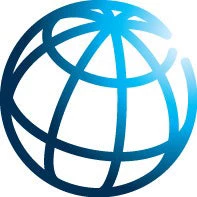Updated country income classifications for the World Bank’s 2020 fiscal year are available here.
The World Bank classifies the world's economies into four income groups — high, upper-middle, lower-middle, and low. We base this assignment on Gross National Income (GNI) per capita (current US$) calculated using the Atlas method. The classification is updated each year on July 1st.
The classification of countries is determined by two factors:
- A country’s GNI per capita, which can change with economic growth, inflation, exchange rates, and population. Revisions to national accounts methods and data can also influence GNI per capita.
- Classification threshold: The thresholds are adjusted for inflation annually using the SDR deflator.
New data on GNI per capita data for 2018 is now available here. More detailed information on how the World Bank classifies countries is available here.
Until last year (Fiscal Year 2019), the income classifications had an analytical purpose and did not influence the World Bank’s lending terms. However, since the last fiscal year, the high-income threshold is also a determining factor for lending rates. Surcharges are applied for lending rates of countries which have been categorized as high income for two consecutive years.
Updated Thresholds
New thresholds are determined at the start of the World Bank’s fiscal year in July and remain fixed for 12 months regardless of subsequent revisions to estimates. The thresholds for income classification have increased from last year due to SDR inflation. As of July 1, 2019, the new thresholds for classification by income are:
|
Threshold |
July 2019/$ (new) |
July 2018/$ (old) |
|
Low income |
< 1,025 |
< 995 |
|
Lower-middle income |
1,026 - 3,995 |
996 - 3,895 |
|
Upper-middle income |
3,996 - 12,375 |
3,896 - 12,055 |
|
High income |
> 12,375 |
> 12,055 |
Changes in Classification
The following countries are assigned to new income groups:
|
|
New group |
Old group |
GNI/Capita/$ (2018) as of July 1, 2019 |
GNI/Capita/$ (2017) as of July 1, 2018 |
|
Comoros |
Lower-middle income |
Low income |
1,320 |
760 |
|
Georgia |
Upper-middle income |
Lower-middle income |
4,130 |
3,790 |
|
Kosovo |
Upper-middle income |
Lower-middle income |
4,230 |
3,890 |
|
Senegal |
Lower-middle income |
Low income |
1,410 |
950 |
|
Sri Lanka |
Upper-middle income |
Lower-middle income |
4,060 |
3,840 |
|
Zimbabwe |
Lower-middle income |
Low income |
1,790 |
910 |
|
Argentina |
Upper-middle income |
High income |
12,370 |
13,040 |
The country and lending groups page provides a complete list of economies classified by income, region, and lending status and links to previous years’ classifications. The classification tables include all World Bank members, plus all other economies with populations of more than 30,000. The term country, used interchangeably with economy, does not imply political independence but refers to any territory for which authorities report separate social or economic statistics.
Data for GNI, GNI per capita, GDP, GDP PPP, and Population for 2018 are now available on World Bank's Open Data Catalog. Note that these are preliminary estimates and may be revised. For more information, please contact us at data@worldbank.org.


Join the Conversation